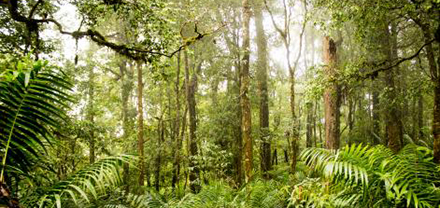A joint initiative based on community and organizational collaboration is set to restore more than 7,000 ha of degraded forest land within a contiguous forest complex of over 600,000 ha in the Mahakam Ulu landscape of East Kalimantan province in Indonesia. Source: Timberbiz
The area has about 70,000 residents, mostly Dayak Indigenous Peoples who have traditional land rights throughout the landscape.
Substantial areas within the logging concessions in the landscape are degraded and risk full loss of forest cover and associated biodiversity. Forest restoration in these concessions has the potential to reverse this trend and contribute to climate change mitigation. However, limitations to this approach are numerous, including the cost for large-scale application or intermittent use of the restored areas for agriculture.
The Borneo Initiative, Forest Stewardship Council and supported by Precious Forests Foundation have come together to bring about an innovative approach with the aim of making a significant contribution to the future protection of the integrity of the forest and its biodiversity, as well as offering associated benefits for local communities.
The project consists of a three-year program that will trial cost-effective restoration techniques combining tree planting and natural regeneration, with the aim of restoring productive capacity and associated natural carbon capture.
Importantly, the project will ensure support for permanent community agroforestry and delivering secure land access to communities with traditional land rights in the concession for their livelihoods.
The situation in the Mahakam Ulu landscape is typical for much of the forest areas of Indonesia and indeed in tropical forests worldwide. If successful, the restoration approach will have important scope for further use in Indonesia and elsewhere.
The partners have identified a gross area of 11,000ha inside an FSC-certified forest management concession where the project activities will be carried out over a period of three years. The restoration area currently consists of degraded forest, shrub, and other degraded lands. Within that area, a restoration area of 7,000 ha and a further 2,200 ha for company-community partnerships have been earmarked as project area.
The outcomes in the area will be as follows:
- Development of well-established restoration tools that can be monitored and demonstrate the long-term, positive impacts of restoration actions.
- Development of a methodology to quantify carbon capture resulting from forest restoration using the FSC ecosystem procedure.
- Adoption of an innovative approach to ensure that Indigenous Peoples benefit from improved land access inside the concession through long-term agreements on land use and revenues from permanent agro-forestry systems that replace slash-and-burn practices.
- Partnership with communities to secure land tenure for concession holder and reduce risk of conflicts.






